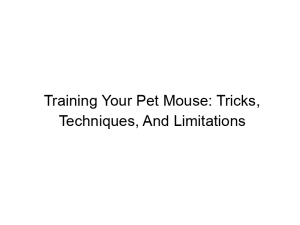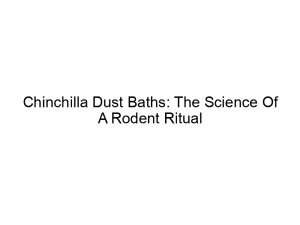Guinea pigs are charming and social creatures, but their communication isn’t always straightforward. Understanding their vocalizations is crucial for their well-being. Why your guinea pig wheeks is a question many owners ask, and this comprehensive guide will unravel the mysteries behind their various sounds. You’ll learn to identify different types of wheeks, understand their context, and ultimately, become a more attentive and caring guinea pig parent. We’ll cover everything from the simple wheek to more complex vocalizations and explore what they mean in different situations.
Guinea pigs, also known as cavies, are surprisingly vocal animals. Their communication relies heavily on a variety of sounds, including wheeks, chirps, purrs, and even screams. Each sound carries a specific meaning, often related to their emotional state, social interactions, or physical needs. Ignoring
these sounds can lead to missed opportunities for bonding and potential problems with health or well-being.
The Wheek: The Most Common Guinea Pig Sound
The wheek is perhaps the most recognizable guinea pig sound. It’s a high-pitched, short squeak, often used as a way to communicate excitement, anticipation, or a request for attention. It can vary in pitch and intensity depending on the context. A high-pitched, insistent wheek might indicate a need for food, while a softer, more playful wheek might accompany a burst of activity.
Types of Wheeks: Deciphering the Nuances
The “Food Wheek”
This is a loud, insistent wheek often accompanied by wiggling and potentially running towards the food source. Your guinea pig might also use pawing gestures to reinforce its desire for food.
The “Play Wheek”
This is usually a softer, shorter wheek often associated with playful behavior like running, jumping, or chasing.
The “Anxiety Wheek”
A less frequent wheek. This wheek might be accompanied by other signs of anxiety, such as hiding, freezing, or trembling. The sound itself will often have a slightly higher pitched and harsher tone compared to normal wheeks.
Beyond the Wheek: Other Guinea Pig Sounds
While wheeks are common, guinea pigs use a variety of other sounds to express themselves. These include:
- Chirps: Short, sweet sounds often used during courtship or playful interactions.
- Purrs: Low rumbling sounds indicating contentment and relaxation.
- Screams: High-pitched, piercing cries usually signifying pain, fear, or distress.
- Rumblestrutting: A low growling sound, often accompanied by body language displays like swaying and teeth chattering, signifying dominance or territorial behavior.
Body Language and Vocalizations: A Combined Approach
It’s crucial to interpret guinea pig sounds in conjunction with their body language. For instance, a wheek accompanied by a wide-eyed, fearful expression suggests a different situation than a wheek accompanied by playful bouncing. Paying attention to both factors will give you a more holistic understanding of your guinea pig’s communication.
Understanding the Context: When and Why Do They Wheek?
The time of day and the circumstances surrounding the wheeking significantly influence its meaning. A wheek at feeding time is different from a wheek during playtime or a wheek in response to a perceived threat.
Factors Influencing Wheeking Frequency
Several factors can influence how often your guinea pig wheeks. These include their personality, age, social interactions, and overall health. Younger guinea pigs tend to be more vocal than older ones. Guinea pigs in groups might wheek more frequently during social interactions.
Guinea Pig Social Interactions and Wheeking
Wheeking plays a significant role in guinea pig social interactions. They use wheeks to communicate with each other, to establish dominance hierarchies, or simply to maintain contact within a group. A chorus of wheeks might indicate a playful interaction, while a single, isolated wheek might signal a need for attention.
Interpreting Distress Calls: When to Seek Veterinary Attention
While wheeking isn’t always a sign of distress, a change in vocalizations, particularly the emergence of screams or unusually frequent and high-pitched wheeks, can indicate pain or illness. Other symptoms to watch out for include lethargy, loss of appetite, or changes in urination or defecation.
Common Mistakes in Interpreting Guinea Pig Sounds
Many guinea pig owners mistakenly interpret wheeks as simply meaning “hungry.” While hunger is a common cause of wheeking, it’s crucial to be aware of other potential underlying reasons. Ignoring other possible contexts can lead to misunderstanding and potentially unmet needs.
Guinea Pig Health and Wheeking: Correlation and Causation
Certain illnesses or injuries can cause increased wheeking. For instance, pain, discomfort, or stress due to underlying health conditions can manifest in more frequent or unusual wheeks. Always seek veterinary advice if you notice any significant changes in your guinea pig’s behavior or vocalizations.
How to Respond to Different Types of Wheeks
Your response to a wheek should be tailored to the context. A “food wheek” requires providing food. A “play wheek” might warrant engaging in playtime. An “anxiety wheek” might necessitate investigation and finding ways to reduce your guinea pig’s stress level.
Enhancing Communication with Your Guinea Pig
Spend quality time with your guinea pig to learn its individual vocalizations and patterns. Consistent interaction builds trust and allows you to learn the subtleties of its communication style. Recognize that each guinea pig has a unique personality and communication style.
Troubleshooting Common Wheeking Issues
If your guinea pig is wheeking excessively or showing unusual vocalization patterns, consider factors like diet, environment, social dynamics, and health. If you can’t pinpoint the cause, consulting a veterinarian is essential.
The Importance of Enrichment and Reducing Stress
Providing a stimulating environment, ample space, social interaction (if appropriate for your guinea pig’s living situation), and opportunities for foraging can significantly reduce stress and potentially minimize unnecessary wheeking.
Using Positive Reinforcement to Shape Behavior
Through positive reinforcement, you can encourage desirable behaviors and minimize undesirable ones. Reward your guinea pig for calm behavior and ignore excessive wheeking unless it’s associated with clear distress.
Frequently Asked Questions
What are the most common reasons for guinea pig wheeking?
The most common reasons are hunger, excitement, a desire for attention, and social interaction. However, pain, discomfort, or anxiety can also cause wheeking.
How can I tell if my guinea pig’s wheeking is a sign of distress?
Distress wheeks are usually higher-pitched, more insistent, and often accompanied by other signs like lethargy, hunched posture, or changes in eating habits. If you are unsure, consult a vet.
My guinea pig is wheeking excessively. What should I do?
First, assess your guinea pig’s environment: is it adequately sized, enriched, and free from stressors? Examine their diet and ensure they are receiving proper nutrition. If you suspect a medical issue, consult a vet.
Can I train my guinea pig to reduce excessive wheeking?
While you can’t entirely eliminate all wheeking, you can manage it by addressing the underlying cause. Positive reinforcement for calm behavior and ignoring excessive wheeking (unless it indicates distress) can be helpful.
What are some signs of illness that might accompany wheeking?
Signs of illness that might accompany wheeking include lethargy, changes in eating or drinking habits, diarrhea, weight loss, changes in urination or defecation, and unusual posture or behavior.
My guinea pigs are wheeking at each other. Is this normal?
Wheeking between guinea pigs is often normal, particularly during social interactions. However, if it’s accompanied by aggression or fighting, you should intervene to ensure their safety and well-being.
How can I create a more enriching environment to reduce stress-related wheeking?
Offer plenty of space, hiding places, chew toys, tunnels, and foraging opportunities. A varied and stimulating environment reduces boredom and stress.
Final Thoughts
Understanding your guinea pig’s wheeks and other sounds is essential for building a strong bond and ensuring their well-being. By paying close attention to their vocalizations and body language, you can quickly identify their needs and address any potential problems. Remember that while a simple wheek might indicate a desire for food or attention, other vocalizations combined with behavioral changes might point towards pain, fear, or illness. Don’t hesitate to seek veterinary advice if you’re concerned. By learning to interpret your guinea pig’s communication, you’ll become a more informed and caring owner, fostering a happier and healthier life for your furry friend. Start paying closer attention to your guinea pig’s sounds today—you might be surprised at what you discover!




